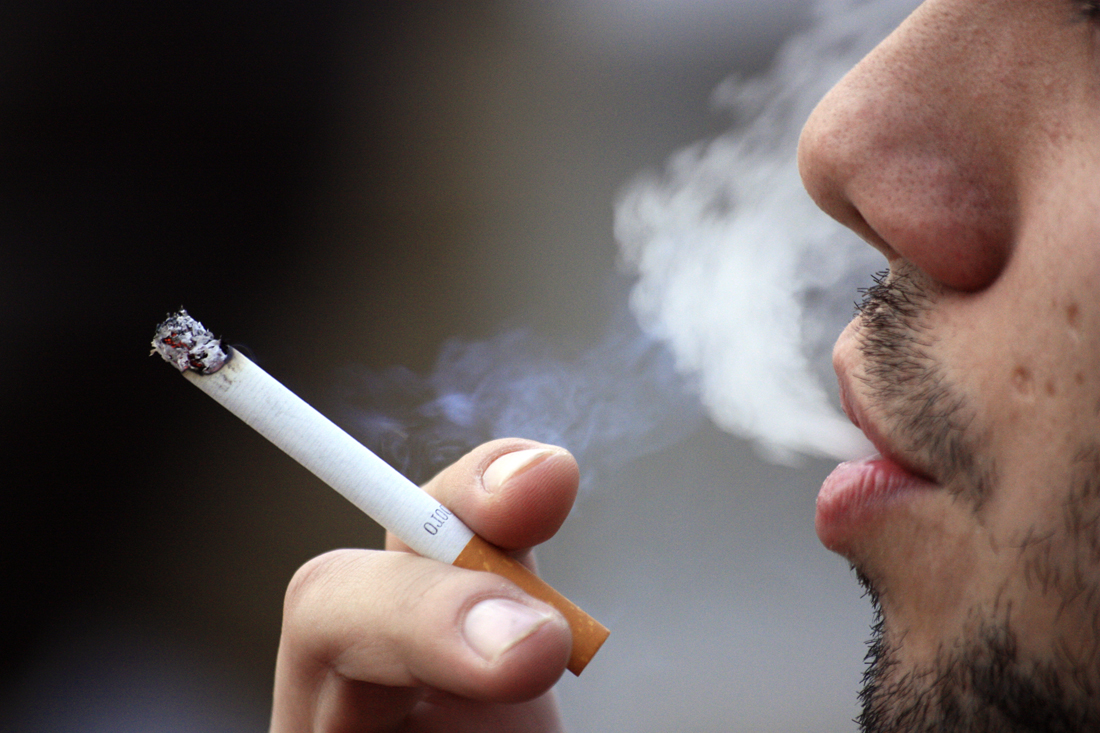Smokeout aims to prevent tobacco use
While most Americans are aware that the fourth Thursday in November is designated as a day to give thanks, many may not know that one week earlier, another national day is set apart to rally against an addiction that kills every 6.5 seconds, said Prevention Specialist Ryan Barfuss.
The Great American Smokeout, a day designated to encourage people to quit smoking tobacco, will be recognized across the United States on Nov. 18, and the USU Student Health and Wellness Center is taking part.
Booths will be available from 10 a.m. to 2 p.m. in the Taggart Student Center basement Nov. 17 and in the Merrill Cazier Library atrium Nov. 18, with advice, support and information about key ways to quit smoking.
“If we can help just even one person get on the path of a smoke-free life then we have done our job,” Barfuss said.
He said tobacco use will kill 1 billion people in the 21st century if current smoking trends continue.
While the number of tobacco users in Utah is significantly lower than the national average, there are more than 230,000 users in the Beehive State, about 10.5 percent of the statewide population, Barfuss said. Nearly 14,800 children in Utah are exposed to secondhand smoke within their own homes. More than 443,000 Americans – 18 percent of all deaths – die because of smoking each year, and that number is expected to escalate.
Worldwide, smoking is on pace to kill 6.5 million people in 2015 and 8.3 million more in 2030, with the biggest rise in low-and middle-income countries, Barfuss said.
While the event offers assistance to a group that lost 5.4 million people last year due to tobacco usage, several students are unaware of such a day, or that it is being recognized at their school.
Junior geology major Heather Sparrow said she knows near 20 friends that smoke, and estimated perhaps one-third of them desire to quit the habit, but doubts that the Smokeout can be the answer.
“I think it’s good to raise awareness, but I don’t know if it will help because you have to have that personal desire, and be willing to work for it,” she said.
However, according to previous Smokeout history, as many as one-third of the nation’s 46-plus million users could be taking the day off from lighting up, according to www.quitsmoking.com.
Christina Wittwer, a mechanical engineering major, said she does believe the day is beneficial to helping smokers, even though she does not know if any of her five or so estimated friends want to kick the habit.
“If it’s something they would be (willing) to hear about, it would be beneficial for them,” said the freshman. Wittwer said though she now knows about the Smokeout, she would still be nervous to tell her friends for fear of offending them.
Senior Chris Saunders had not heard of the day either, and said he did not personally know any smokers, but thought the Smokeout was a great idea, as long as the smokers were open for suggestions to walk away from the addiction.
“If people want help, then it’s good to (seek) help,” he said.
The purpose of the booths on campus are only to reach out to those who are willing to hear the advice, said Karinne Van Wagoner, a senior in community health education who collaborated with Barfuss in organizing the event.
“Some people think it isn’t any of our business to help people quit smoking. We are not forcing people into anything, just raising awareness that we are a resource for those that may decide to quit,” said Van Wagoner, who worked alongside fellow Wellness Center intern Ashlee Cannon in preparation for the day’s events.
“We are non-confrontational so whoever wants to quit smoking can. They will be the ones who receive the information and help if they want to,” Barfuss said.
The Great American Smokeout event grew out of a 1971 event in Massachusetts, in which state citizens were asked to give up cigarettes for a day and donate the money they would have spent on cigarettes to a high school scholarship fund.
In 1974, Lynn R. Smith, a newspaper editor in Minnesota, was the catalyst for the state’s first D-Day, or Don’t Smoke Day. Within the next two years, the idea caught fire. On Nov. 18, 1976, the California Division of the American Cancer Society succeeded in getting nearly one million smokers to quit for the day. The first national Great American Smokeout was held in 1977 with the sponsorship of the American Cancer Society, who still backs the Smokeout today.
There are several important objectives meant to be accomplished by the Smokeout, Van Wagoner said.
“We hope that smokers will commit to quit for the whole day of the Smokeout, and that they will utilize the Wellness Center for the resources we have to help them quit smoking,” she said. “I personally enjoy … providing people with the tools to make their lives healthier.”
– rhett.wilkinson@aggiemail.usu.edu

